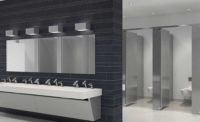All over the world, fats oils and grease (FOG) clog sewers every day. The United States is no exception. It is believed that around 75% of U.S. sewer systems are working at half capacity because of grease build up and blockages. Billions of dollars are spent each year keeping sewage networks operating.
The problem with FOG is it adheres to the walls of pipes, inside buildings; in plumbing systems and outside; in city sewers, where they can actually form large chunks of hardened fat that mix with wet wipes and other sanitary products, known as Fatbergs. These Fatbergs can be as big as buses and cause blockages which cost municipalities millions of dollars in repair work. FOG also damages pumps in lift stations, and can greatly reduce the efficiency of sewage treatment plants.
Ultimately, if FOG could get into our natural water courses, it would harm wildlife and cause untold widespread pollution.
Grease traps have been around for more than 100 years, and until the introduction of automatic grease recovery units (AGRUs), they hadn’t changed much in all that time. All grease traps, passive grease interceptors and AGRUs are designed to help the separation of fats, oils and greases from wastewater.
How is FOG controlled?
Grease doesn’t mix well with water and separates very quickly. All you need is a bit of space and time for this to happen. Inside a grease trap, there is usually enough “retention time” for FOG to separate from the “cleaner” water. As oil is lighter than water, it naturally rises to the top. Once at the surface, it can be trapped and prevented from leaving the tank, thanks to a baffle plate over the outlet. Food waste solids and sediment will settle at the bottom of the tank.
Sounds easy, right? You might be forgiven for thinking the most basic passive grease trap is all you need, but it’s not that straight forward. If the trapped grease sits in the tank for a long time, not only will it start to smell, but as the grease increases on top and the solids settle at the bottom, the “free” volume for trapping FOG quickly diminishes, and the efficiency of the grease trap falls. If the passive grease trap is not frequently emptied, grease starts to pass through the grease trap and within weeks, sometimes days, the passive grease trap, which may have started with 99% efficiency, suddenly drops its efficiency to zero. The problem is it’s difficult for end users to know when and how often the tank needs emptied so they tend to ignore it. Add to that, grease trap emptying is a costly business.
The benefits of AGRUs
There are numerous benefits to specifying AGRUs, including:
-
Maintains a 99% efficiency level — The AGRU is designed and tested as a passive grease trap, but the big difference is it physically skims the trapped surface grease and removes it from the tank into an external receptacle. It also filters the food waste that would normally fall to the bottom of the tank. As it does this, on a daily basis, there is always ample “free” volume maintained in the tank for grease to separate and the AGRU can maintain its high efficiency level.
-
Can fit almost anywhere — Many grease interceptors are large tanks, sized big so that they can hold sludge and FOG for extended periods of time. AGRUs can be small enough to fit under sinks as they only need to hold FOG for a few hours before the skimming starts. This means they can fit almost anywhere.
-
Saves thousands of dollars — Because FOG and food waste solids are removed atuomatically every day, AGRUs don’t need emptying very often. This means customers don’t need to pay pumpers every month. A standard under sink grease trap might hold 50 pounds of FOG before manufactures recommend it is emptied. A busy restaurant will produce 5-10 pounds of fat a day. In a couple of weeks, these traps will need emptying. The AGRU removes fats, oils and grease every day automatically, which will save your customers thousands of dollars on pump out fees.
-
More hygienic — If an inside grease trap is being manually emptied or even pumped clean, this is a potential hazard as the FOG has been sitting stagnant for weeks. Grease removed from the AGRU is transferred to an external grease collector daily and is the same grease that was in the sink only a few minutes earlier. Nowadays, we cannot afford to cut corners on hygiene. Some AGRUs have been approved for inclusion in HACCP conforming kitchens.
-
Renewable energy — The grease skimmed from the AGRU is a better quality of grease than the FOG that is pulled out of traditional grease traps and interceptors. To start, it is already partially dewatered and has solids filtered out, so the grease we remove can be recycled and used for pharmaceutical products or as a renewable energy source. Not only have we trapped and removed this potential “pollutant,” but we are generating a valuable reusable commodity.
- Reduces carbon footprints — An additional environmental impact of using AGRUs is the reduction in carbon footprint. Consider that every restaurant with a grease trap across the country needs a pump truck to come every month for that trap to run efficiently. That’s a lot of traffic. Since AGRUs do not need to be pumped out every month, that traffic is greatly reduced. Something to think about if your customer own multiple food outlets.
Conclusion
So, although trapping grease isn’t exactly ‘rocket science,’ there are much better ways to do it than the traditional 100-year-old method. Given that using an AGRU is more efficient, will save money, fits almost anywhere in a kitchen or basement and has a threefold positive impact on the environment, why would you consider anything else?



